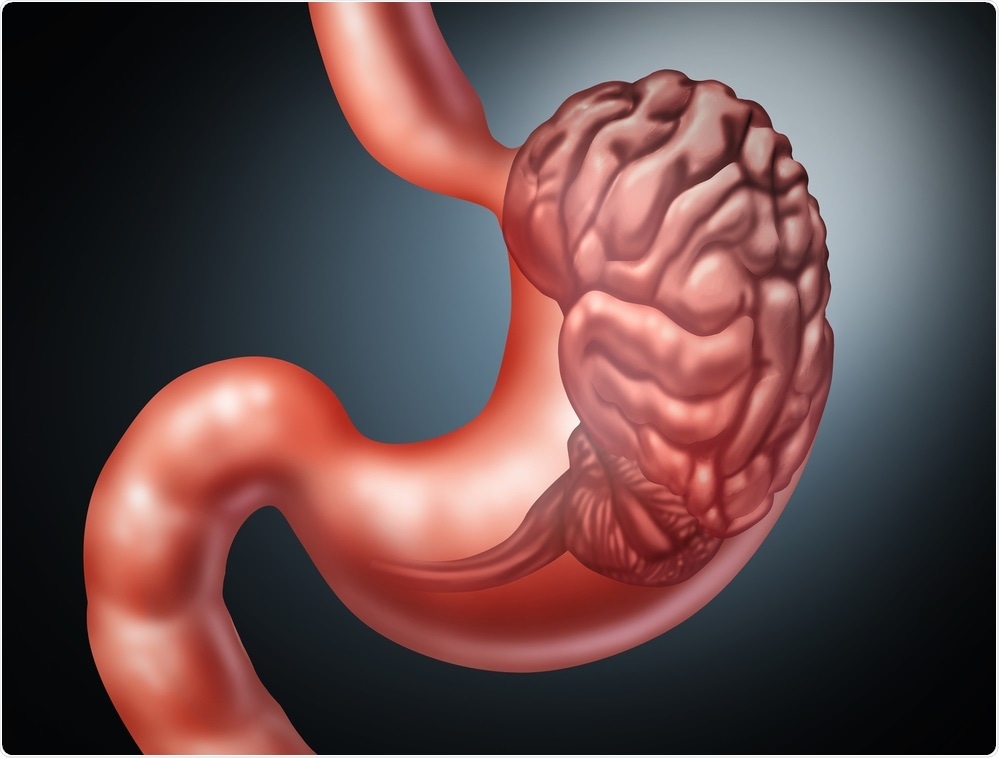The communication system between the gut and brain is known as the gut-brain axis and is well established. Now, scientists have developed a strategy that raises the volume of gut-body communication, paving the way for new interventions to improve human health.
 Lightspring | Shutterstock
Lightspring | Shutterstock
Researchers at the Alkek Center for Metagenomics and Microbiome Research and the Dan L Duncan Comprehensive Cancer Center at Baylor College of Medicine aimed to study enteroendocrine cells, which are hormone-producing cells in the gastrointestinal tract. These cells are dubbed as vital moderators in the communication between the gut and other parts of the body.
Specialized hormone-producing cells
To land to their findings, the researchers partnered with scientists at the Baylor and Texas Children’s Hospital to formulate a new strategy that an increase in the number of specialized cells.
"Enteroendocrine cells are extremely challenging to study because we just don't have a lot of cells," Dr. Joseph M. Hyser, assistant professor of virology and microbiology and member of the Alkek Center for Metagenomics and Microbiome Research, said in a statement.
"They represent less than 1 percent of all the cells in the intestinal epithelium,” he added.
Enteroendocrine cells are usually found in the wall of the gut. They produce and secrete a hormone that helps maintain numerous body processes, such as controlling food intake, blood glucose levels, and stomach emptying.
They are found in the pancreas, stomach, and gastrointestinal tract. The hormones may be released into the bloodstream to trigger systemic effects and nervous response.
Increasing communication
Enteroendocrine cells (EECs) are specialized epithelial cells responsible for producing molecules that are important for intestinal balance. However, they are limited in number, making it hard for researchers to study them.
To study the cells, the researchers from Hyser and Chang-Graham partnered with other scientists at Baylor and Texas Children’s Hospital to create a technique that can help increase the number of Enteroendocrine cells.
The researchers used a type of human intestinal epithelial cell culture system dubbed as enteroids. To increase the number of the cells, they used previous work on the overexpression of the transcription factor neurogenin-3 drives stem cells in the gut to grow as enteroendocrine cells. Simply put, they used genetically-engineered human intestinal enteroids to express the gene neurogenin-3, which can be induced by doxycycline, creating a molecular switch.
Doxycycline, when added to the cultures, boosted the production of neurogenin 3, triggering the expression of other genes and the development of endocrine enteroid cells. As a result, the number of endocrine enteroid cell production increased from 1 to 40 percent.
Furthermore, the endocrine enteroid cell population, which were expanded, were able to respond to viral and hormonal stimuli as native endocrine cells in the gastrointestinal tract do. They were able to secrete serotonin and other neurotransmitter mediators. Also, their levels increased and became easily detectable.
Promising results
With the results of the new study, the researchers can now create more endocrine cells, which can be seen and examined under the microscope. The researches can now also study and measure physiological responses.
The technique helped develop a system that can help study how the gut communicates with the body through whispered messages. In turn, the system has been used to increase or raise the volume of the chemical whispered messages. Hence, it helps the researches become aware of how the gut interacts with the rest of the body.
It can also help facilitate the research on how the gut affects health and provide a means to formulate and test new interventions to treat various diseases. For instance, researchers can use the technique to analyze how viruses like rotavirus regulate the responses of the endocrine guy populations.
The development of this model system also will allow researchers to begin investigating the complex interactions of the microbiome and diet with enteroendocrine cell function.
Since several of the hormones and effector molecules released by enteroendocrine cells are already targets for the treatment of diseases such as type 2 diabetes and irritable bowel syndrome, we expect this model to aid in identifying novel therapeutics to treat these and other human diseases.”
Prof. Dr. Robert Britton
Journal reference:
Chang-Graham, A., Danhof, H., Engevik, M., Tomaro-Duchesneau, C., Karandikar, U., Estes, M., Versalovic, J., Britton, R. and Hyser, J. (2019). Human Intestinal Enteroids With Inducible Neurogenin-3 Expression as a Novel Model of Gut Hormone Secretion. CMGH Journal.